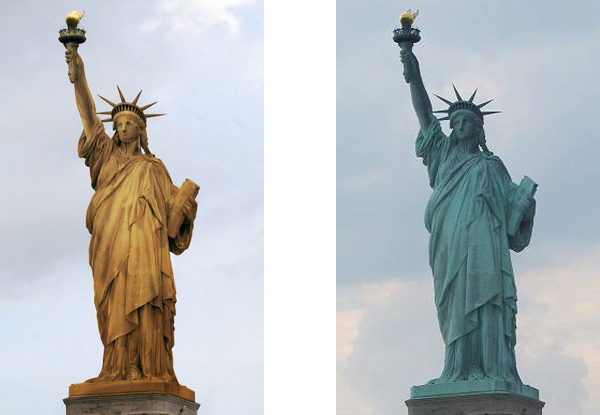
Story Highlights
- historical event:
- The Statue of Liberty's exterior is composed of copper plates, which are currently a blue-green color. However, at the time when the statue was solemnly unveiled, the metal hadn't yet been exposed to the elements and thus still had its natural color.
On this day in 1886, the Statue of Liberty was solemnly unveiled in New York. Today it is, of course, one of the icons of that city. The statue was donated by the French citizens, but the base of the statue was financed by the American citizens themselves. The Statue of Liberty’s exterior is composed of copper plates, which are currently a blue-green color. However, at the time when the statue was solemnly unveiled, the metal hadn’t yet been exposed to the elements and thus still had its natural color.
Only after 1900 were reports received that the statue was taking on a blue-green color. This was the consequence of a natural chemical reaction where copper bonds with oxygen, water, and carbon dioxide. A chemical compound is thus formed, which has a distinct blue-green color, visible for example on the copper roofs of houses.
To get a better feel for the time period in which the unveiling occurred, let us mention that this was the time of Sherlock Holmes, when horse-driven carriages were still the main method of transportation in cities and there was no widespread use of electric lighting, movies, or aircraft.




